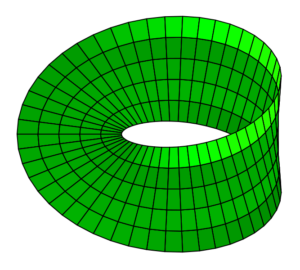 The word counterpoint literally means juxtaposing one point against another. In the case of music, it means sounding one set of pitches (such as a melody) against, or in simultaneity with, another set of pitches. Most of us first experience counterpoint early when we sing “rounds” like Frère Jacques or Row, Row, Row Your Boat, whether we use the term or not.
The word counterpoint literally means juxtaposing one point against another. In the case of music, it means sounding one set of pitches (such as a melody) against, or in simultaneity with, another set of pitches. Most of us first experience counterpoint early when we sing “rounds” like Frère Jacques or Row, Row, Row Your Boat, whether we use the term or not.
For an adult, singing these rounds is relatively easy. For a child, it’s a gymnastic feat, at least until the child’s inner ear is able fully to concentrate on a single musical line and “tune out” the competing melodies. When that skill is in place, singing a round becomes fun for the singer (young or old), particularly when each singer is able to hear, and enjoy, the offset melodies from the other groups.
But although counterpoint in this example seems easy, it actually ranks one of the most sophisticated of all devices in Western music. Entire musical eras are defined by counterpoint. The most famous may be the Baroque period, from the 17th to the early 18th century, when masterful contrapuntal works known as fugues by composers like J.S. Bach dazzled listeners.
Here’s the thing: not all musical lines can fit together. Not all melodies invite, or tolerate, a harmonious placement of other melodies below, above, or intermixed with them. When a composer is skilled in writing contrapuntal lines, we tend to think that composer either has a real gift for this essentially mathematical aspect of music, or has studied extremely hard to master the rules of blending melodies.
It can happen either way. Few composers can just spit out musical lines that weave into perfect tapestries of scintillating counterpoint. Even the best composers study the rules of counterpoint diligently. Let us remember that J.S. Bach not only had an extraordinary gift for writing contrapuntal music, but also was rigorously trained from childhood by older “composer” relatives in order to be able to do this well.
Plus, Bach’s era resounded with counterpoint. For decades, new music of that time had reveled in the cleverness and sweep of complex countrapuntal writing. It was like an aural video game, if you will, to create a melody that set off linear reactions and wove its own musical destiny. It had to seem natural and delicious.
Well, it will never be natural for me. I remember being in a graduate theory class writing my first (and only) extensive fugue. It wasn’t a pretty experience. It sounded okay, although I chose not to keep it for posterity.
Actually, I was in a perfect position to appreciate counterpoint . . . in nature. Throughout graduate school I lived down a dirt road in a forest outside of Chapel Hill, NC. That same area today oozes with landscaped developments and classy mansions. But not then. The only elegance along those back roads came from the interwoven canopy of tall pines spread out across the Carolina-blue sky.
A nightly counterpoint drifted through my trailer’s rickety kitchen windows: night birds, hoot owls, and crickets all set forth their melodies. I hear that counterpoint in my mind’s “ear” even today when I recall struggling with late-night homework analyzing 19th-century chorales, seeking Wagnerian Leitmotivs, and penning rudimental tone rows in an effort to copy Schoenberg’s brilliance.
Who knew I’d marry a man with a Ph.D. in Music Theory (as well as a bunch of other degrees in composition and law)? For Hank, my graduate theory class would have been a breeze. His mind thinks in mathematical and analytical ways. Probably today he and J.S. Bach would hang out in Starbucks jostling one another saying, “Okay, what can you do with this theme?”
We are at work on our Music Theory series Teaching Music Classically. Focusing on this project has caused me to think hard about topics like counterpoint, but also about the basic rudiments of music. It’s a bit like going into the kitchen, gathering ingredients for a scratch cake, and saying, “baking soda, salt, flour, eggs . . . Okay, how do these things really work?”
Of course, chemistry answers that question, just as science and math explain so much of music’s structure and power. But a mathematical formula is one thing. Placing an egg in one’s hand and pondering what it actually does when combined with baking powder? That’s a different story.
Along the same lines, I’ve recently been giving talks on the rudiments of music in a variety of venues, from ships and lecture halls around the world to music clubs here in the Dallas Metroplex. We come together as people who love and spend time with music. Yet each of us can forget that the music we love is made up of basic, consistent ingredients.
I find it comforting that, no matter what kind, Western music can be analyzed by considering five rudiments: rhythm, melody, harmony, timbre (instrumental or vocal color), and texture (the layering of musical lines). Exploring these can change how we perceive music in any style, from folk to rap to a lengthy symphony by Mahler.
And what could be more “classical” in teaching than enriching our understanding of rudiments? Or recognizing that something as simple as pulse or a tune can be reinvented thousands of times to produce an endless flow of music. But more on this topic in the weeks to come.



